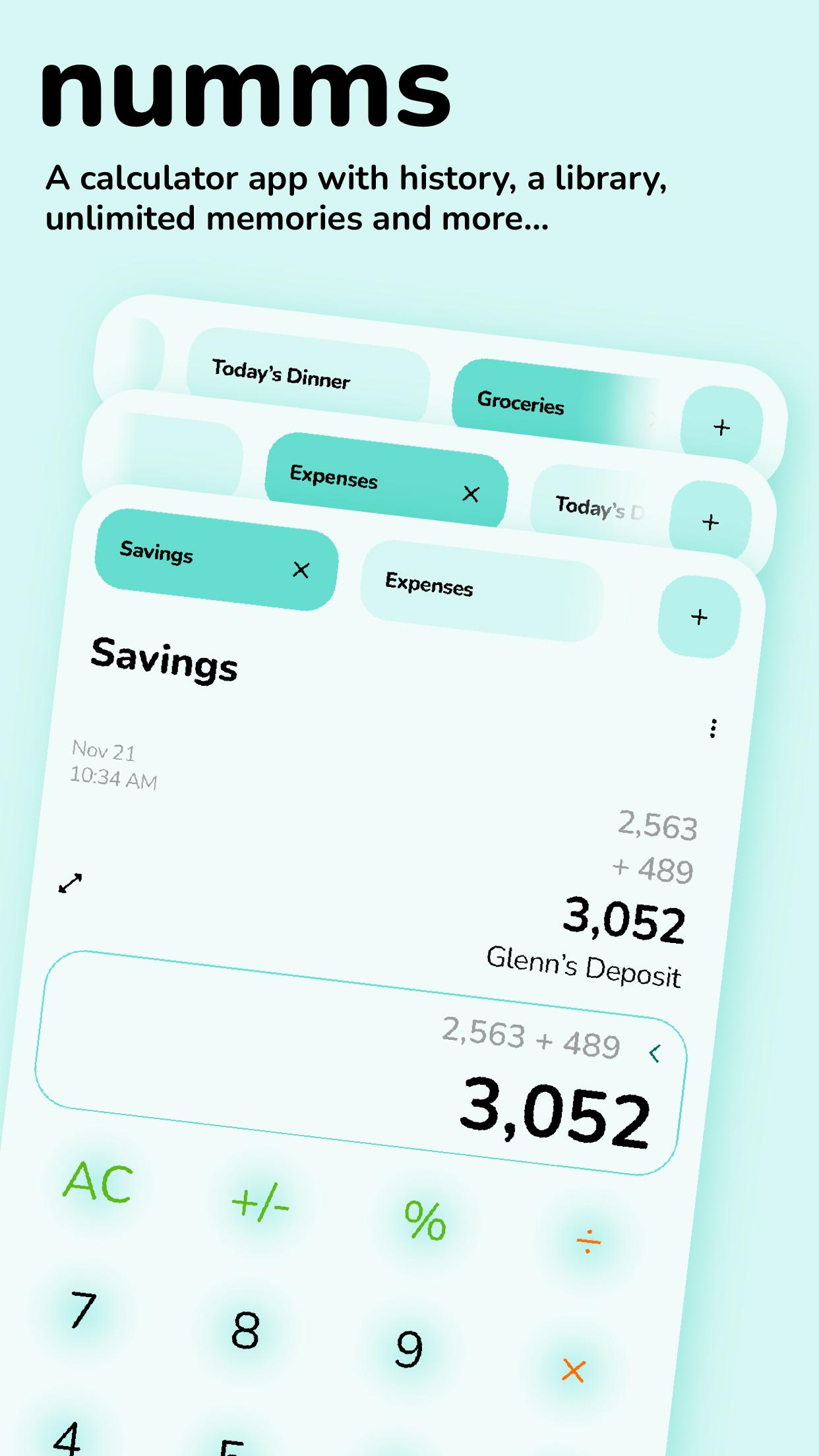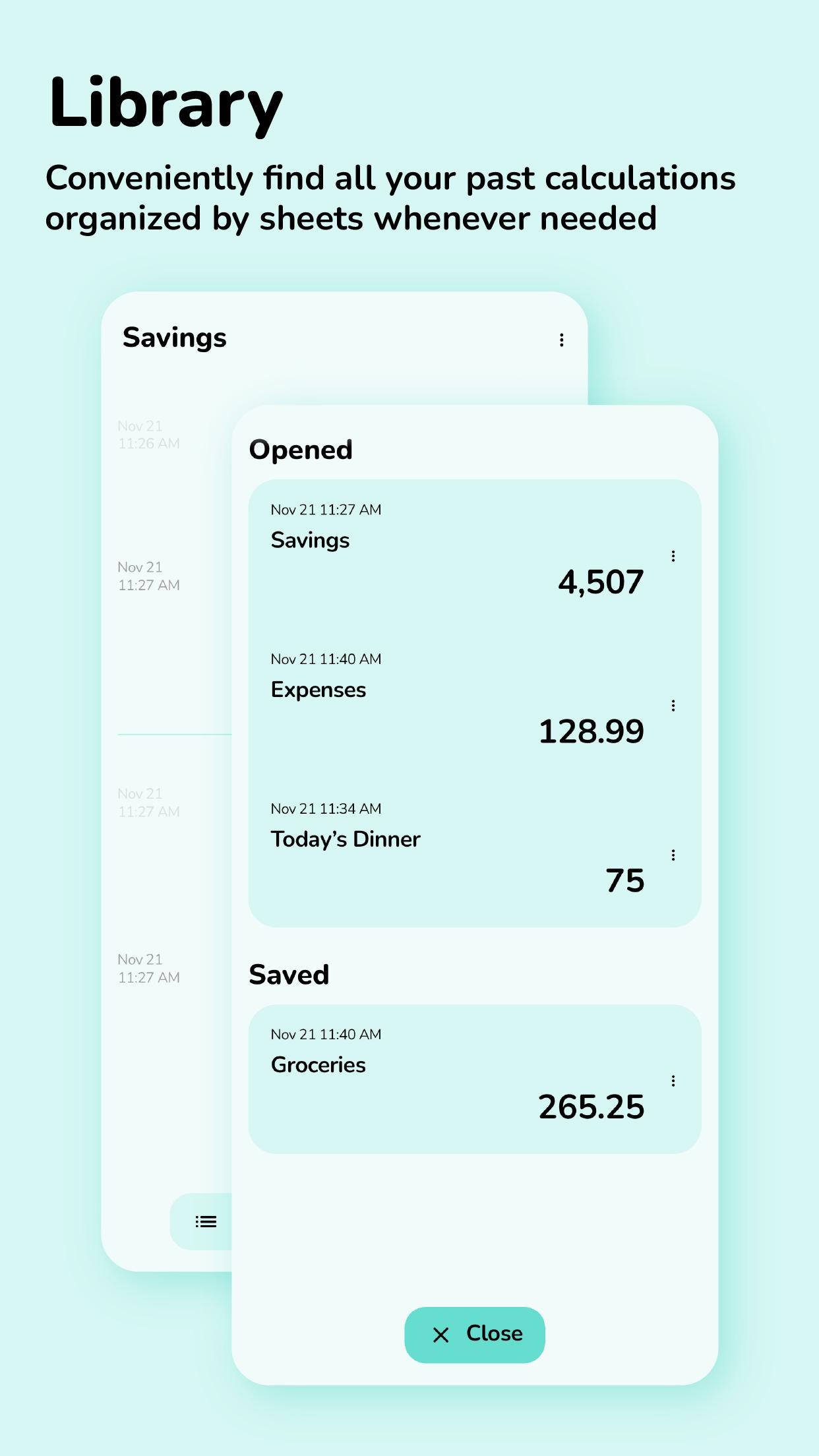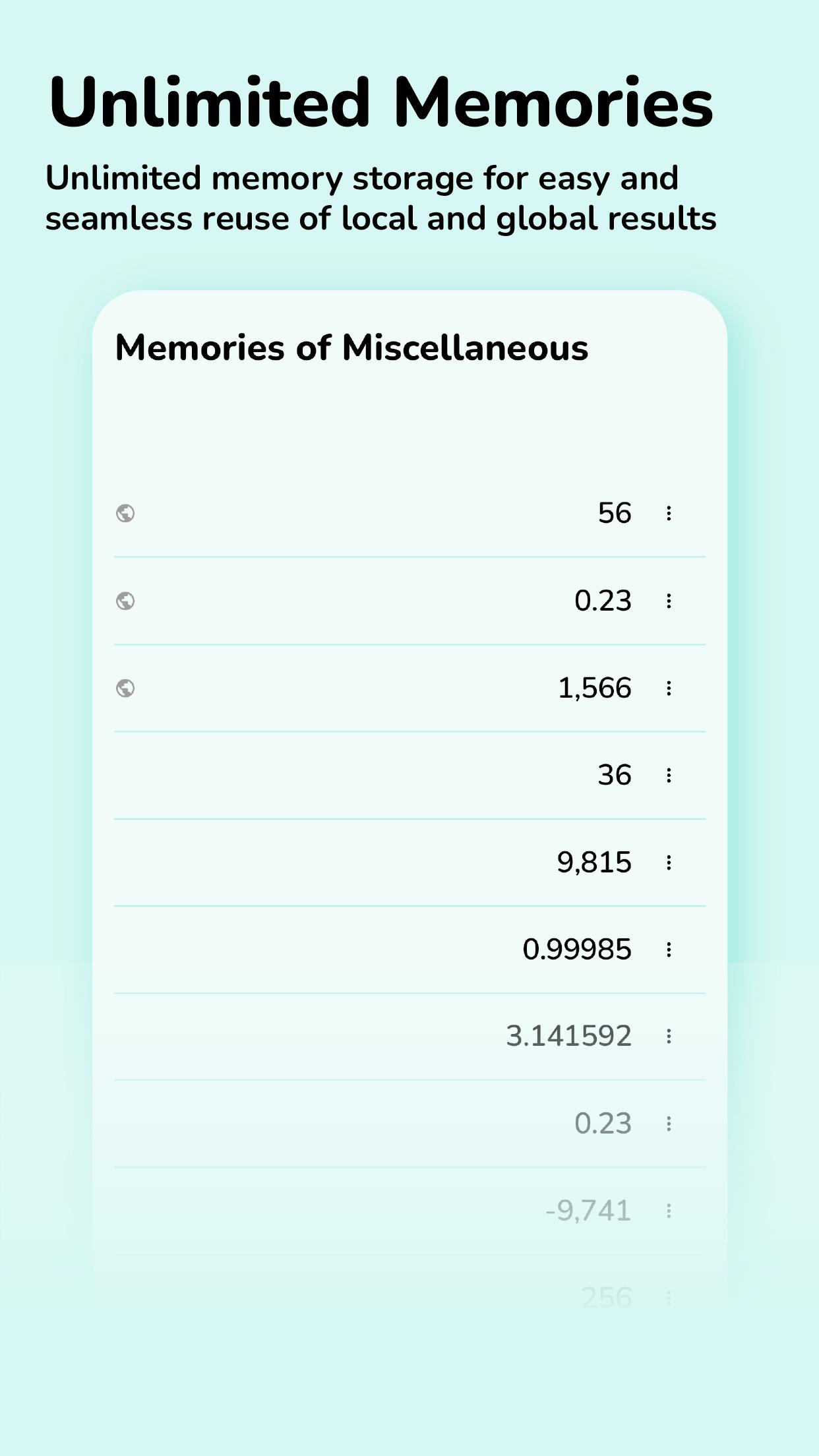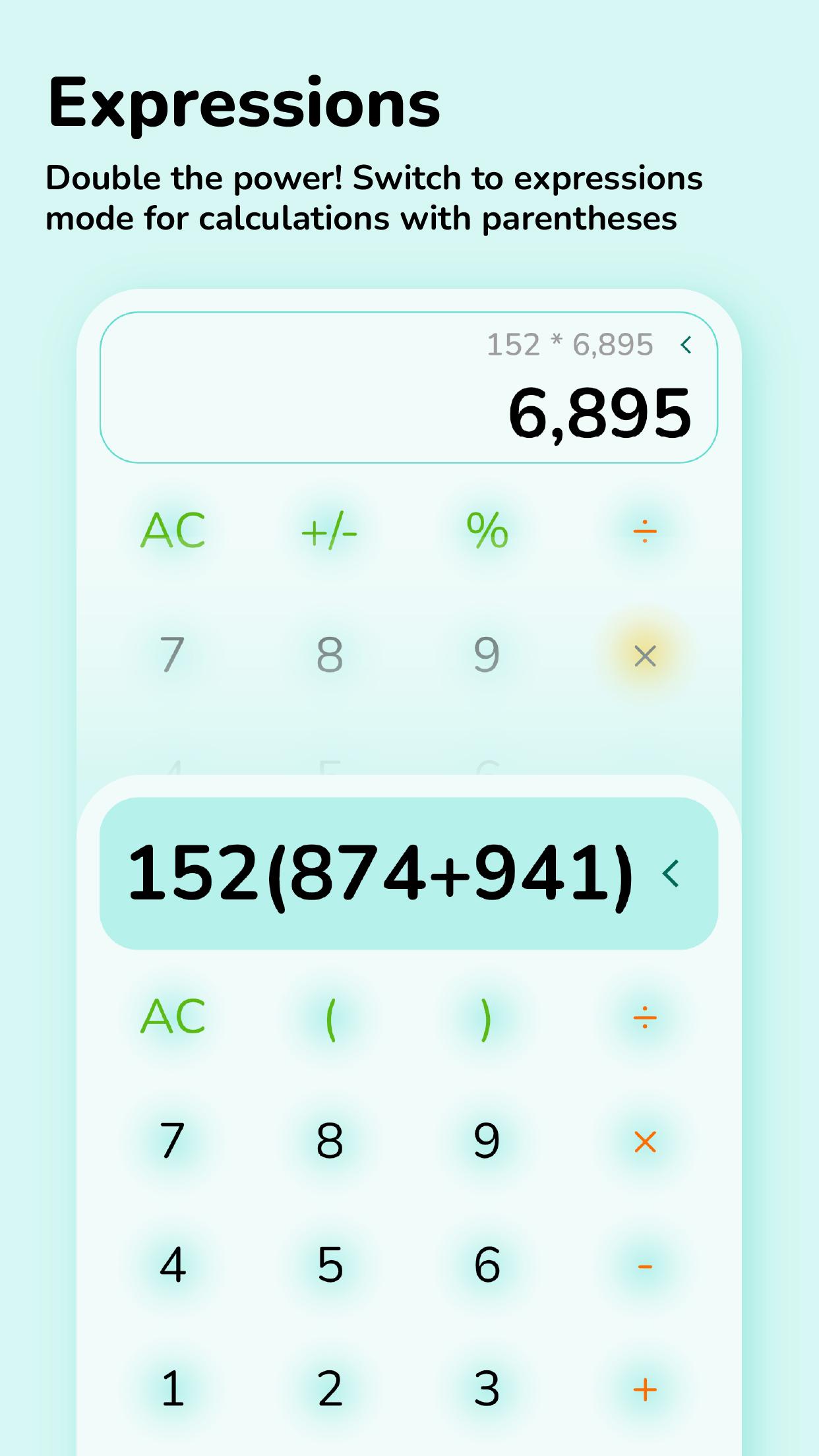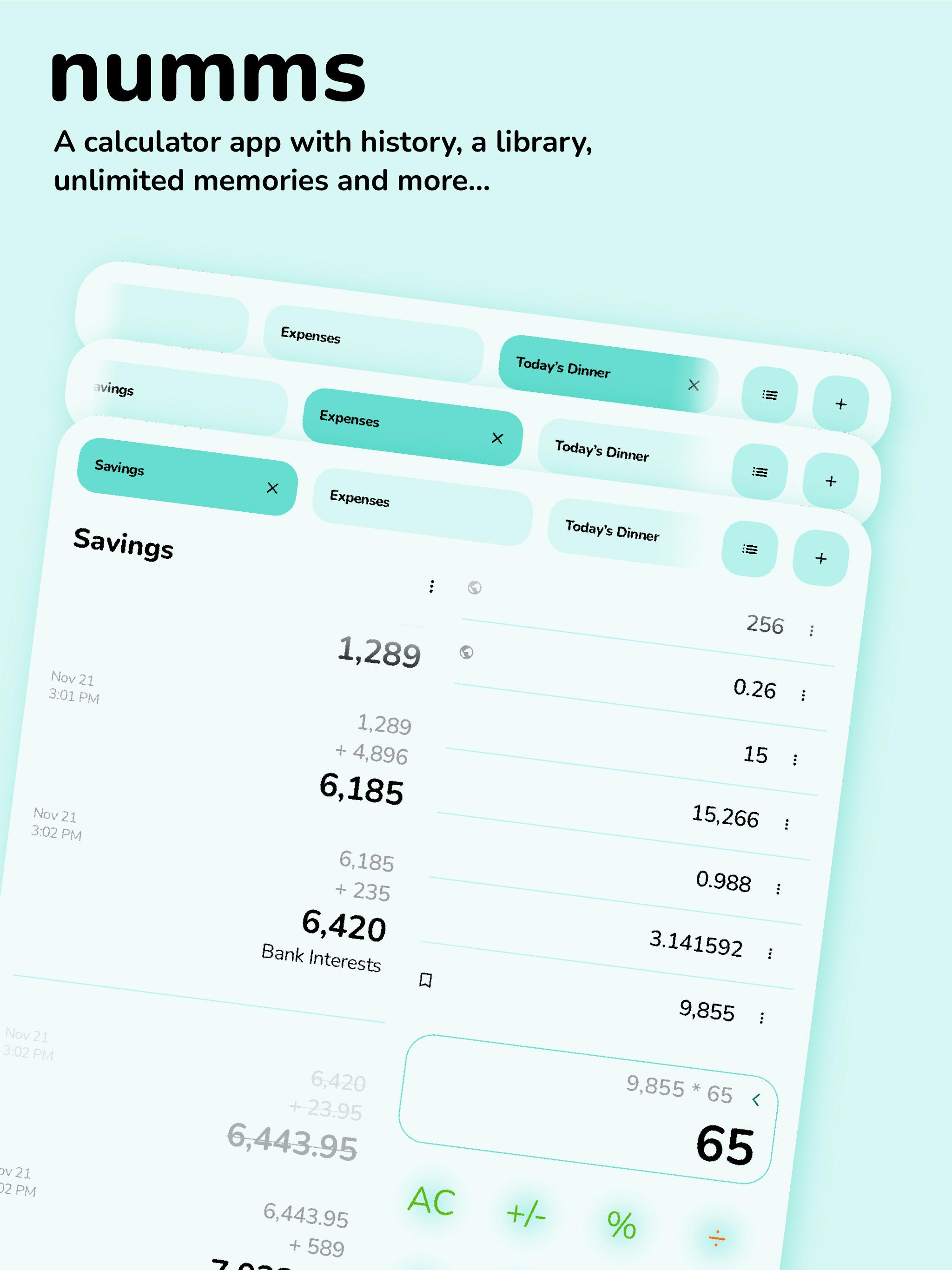The Calculator with history, notes, memories & more
Numms is a calculator with history, notes, unlimited memories, fully responsive in tablet and has dark mode.
Numms, a captivating number puzzle game, challenges players to strategically combine numbered tiles to reach specific target values. The core gameplay revolves around merging adjacent tiles bearing identical numbers. Upon merging, the two tiles combine into a single tile displaying the sum of their original values. This simple yet elegant mechanic forms the foundation of Numms' engaging gameplay loop.The game typically begins with a small grid, often 3x3 or 4x4, populated with a few starting tiles. These initial tiles usually bear small numbers, such as 1 or 2. With each turn, a new tile, also bearing a small number, is randomly placed on the grid. The player's objective is to manipulate the existing tiles by sliding them in any of the four cardinal directions: up, down, left, or right. When tiles with matching numbers collide during a slide, they merge, creating a tile with a higher value.
As the game progresses, the player aims to create tiles with increasingly larger numbers. The ultimate goal often involves reaching a specific target number, such as 2048, or even higher values in more challenging variations. The strategic element of Numms arises from the limited space on the grid and the unpredictable placement of new tiles. Players must carefully plan their moves to avoid filling the grid with tiles that cannot be merged, effectively leading to a game over scenario.
The seemingly simple mechanics of Numms belie a surprising depth of strategy. Experienced players develop techniques to maximize their score and prolong gameplay. One common strategy involves focusing on building up larger numbers in a specific corner or along an edge of the grid. This allows for more controlled merging and prevents smaller tiles from cluttering valuable space.
Another key aspect of skillful Numms play involves anticipating the placement of new tiles. While the exact location is random, experienced players can often predict the general area where a new tile will appear. This foresight allows them to preemptively position their existing tiles to facilitate future merges.
Furthermore, efficient tile movement is crucial for success in Numms. Aimlessly sliding tiles without a clear plan can quickly lead to a gridlock. Strategic players carefully consider each move, aiming to create cascading merges where multiple pairs of tiles combine in a single turn. These chain reactions can rapidly increase the value of tiles and clear space on the grid.
The visual presentation of Numms often complements its minimalist gameplay. Clean lines, simple shapes, and a clear color palette contribute to a visually appealing and uncluttered experience. The use of distinct colors for different tile values further enhances readability and allows players to quickly assess the state of the grid.
Numms' accessibility and engaging gameplay have contributed to its widespread popularity. The simple rules are easy to learn, yet the strategic depth provides a lasting challenge. The game's ability to provide short bursts of entertainment or longer, more strategic sessions makes it suitable for a wide range of players.
The inherent randomness of Numms adds an element of luck, but skillful play significantly influences the outcome. Strategic planning, efficient tile movement, and a bit of foresight can greatly increase the chances of reaching high scores and achieving challenging objectives. While luck may play a role in the placement of new tiles, strategic decision-making ultimately determines a player's success in Numms.
The enduring appeal of Numms lies in its simple yet challenging gameplay. The combination of strategic planning, spatial reasoning, and a touch of luck creates an engaging experience that can captivate players for hours. Whether aiming for a specific target number or simply striving for a high score, Numms provides a rewarding and intellectually stimulating puzzle experience.
The Calculator with history, notes, memories & more
Numms is a calculator with history, notes, unlimited memories, fully responsive in tablet and has dark mode.
Numms, a captivating number puzzle game, challenges players to strategically combine numbered tiles to reach specific target values. The core gameplay revolves around merging adjacent tiles bearing identical numbers. Upon merging, the two tiles combine into a single tile displaying the sum of their original values. This simple yet elegant mechanic forms the foundation of Numms' engaging gameplay loop.The game typically begins with a small grid, often 3x3 or 4x4, populated with a few starting tiles. These initial tiles usually bear small numbers, such as 1 or 2. With each turn, a new tile, also bearing a small number, is randomly placed on the grid. The player's objective is to manipulate the existing tiles by sliding them in any of the four cardinal directions: up, down, left, or right. When tiles with matching numbers collide during a slide, they merge, creating a tile with a higher value.
As the game progresses, the player aims to create tiles with increasingly larger numbers. The ultimate goal often involves reaching a specific target number, such as 2048, or even higher values in more challenging variations. The strategic element of Numms arises from the limited space on the grid and the unpredictable placement of new tiles. Players must carefully plan their moves to avoid filling the grid with tiles that cannot be merged, effectively leading to a game over scenario.
The seemingly simple mechanics of Numms belie a surprising depth of strategy. Experienced players develop techniques to maximize their score and prolong gameplay. One common strategy involves focusing on building up larger numbers in a specific corner or along an edge of the grid. This allows for more controlled merging and prevents smaller tiles from cluttering valuable space.
Another key aspect of skillful Numms play involves anticipating the placement of new tiles. While the exact location is random, experienced players can often predict the general area where a new tile will appear. This foresight allows them to preemptively position their existing tiles to facilitate future merges.
Furthermore, efficient tile movement is crucial for success in Numms. Aimlessly sliding tiles without a clear plan can quickly lead to a gridlock. Strategic players carefully consider each move, aiming to create cascading merges where multiple pairs of tiles combine in a single turn. These chain reactions can rapidly increase the value of tiles and clear space on the grid.
The visual presentation of Numms often complements its minimalist gameplay. Clean lines, simple shapes, and a clear color palette contribute to a visually appealing and uncluttered experience. The use of distinct colors for different tile values further enhances readability and allows players to quickly assess the state of the grid.
Numms' accessibility and engaging gameplay have contributed to its widespread popularity. The simple rules are easy to learn, yet the strategic depth provides a lasting challenge. The game's ability to provide short bursts of entertainment or longer, more strategic sessions makes it suitable for a wide range of players.
The inherent randomness of Numms adds an element of luck, but skillful play significantly influences the outcome. Strategic planning, efficient tile movement, and a bit of foresight can greatly increase the chances of reaching high scores and achieving challenging objectives. While luck may play a role in the placement of new tiles, strategic decision-making ultimately determines a player's success in Numms.
The enduring appeal of Numms lies in its simple yet challenging gameplay. The combination of strategic planning, spatial reasoning, and a touch of luck creates an engaging experience that can captivate players for hours. Whether aiming for a specific target number or simply striving for a high score, Numms provides a rewarding and intellectually stimulating puzzle experience.



